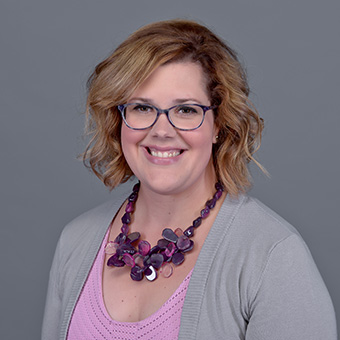
Dr. Heidi Kraus of the Hope College art and art history faculty has coauthored the textbook “A Short History of the Ancient World” with Nicholas Rauh of Purdue University.
To help mark the publication of “A Short History of the Ancient World,” University of Toronto Press has shared a blog post by Heidi Kraus in which she discusses the importance of using history, art and literature together to help inspire students to ask meaningful questions and to pursue answers.
Published by the University of Toronto Press, the college-level, 356-page book traces the emergence of urban civilizations in Africa, Asia and Europe from ancient times through the fall of the Roman Empire. It employs a broad-based social historical approach, examining the unique social, cultural, religious, economic and political characteristics of each civilization, and explores the connections between societies in the Roman Mediterranean, East Africa, India and China. The volume concludes by reflecting on patterns common to the civilizations during both their existence and their collapse.
Kraus is an assistant professor of art history and director of the gallery of the De Pree Art Center and Gallery at Hope. She initially joined the project to identify images of historic sites and works of art to illustrate a manuscript that Rauh, a professor of classics at Purdue, had developed. As she shared art-historical analysis and content related to the images, her role grew and Rauh invited her to provide additional material throughout the book as coauthor.
Although Kraus had previously published peer-reviewed articles in scholarly journals, “A Short History of the Ancient World” is her first book. She appreciates having the opportunity to contribute to a publication that will help other instructors and be read by a wide student audience, and especially values helping develop a textbook that integrates perspective from multiple academic disciplines.
“I’m happy that it can be a service to the field and do it in a new way — a broadly interdisciplinary way,” she said.
“The age of disciplines living in silos is over,” she said. “Art, history, literature, science, the development of societies, none of them happen in isolation from each other. We can understand them more fully if we bring all of the disciplines together in studying them. At the same time, the challenges facing society and the world today are complex and we can address them more effectively if we apply a broader range of skills and insights. That’s something that I’m passionate about.”
Kraus’ interdisciplinary focus at Hope has included fostering conversation concerning race and discrimination through the 2016 exhibition “Hateful Things / Resilience,” and co-coordinating “Challenging Borders,” an ongoing two-year program which last year engaged faculty-student projects from all of the college’s academic divisions in exploring the themes of migration, displaced persons and refugees.
Kraus has been a member of the Hope faculty since 2012. Her scholarly background is in neoclassicism, with a focus on 18th- and 19th-century French art and architecture. With neoclassicism inspired by the classical era, her training has included extensive experience with art and architecture from the period covered by the book.
She teaches modern and contemporary art history at Hope. Her current research focuses on analyzing the influence of 18th- and 19th-century art and ideology in contemporary street art and sites of memory in Paris, France, following the 2015 terrorist attacks.
Prior to coming to Hope, she taught at the University of Iowa and Drake University. She was also a post-doctoral fellow at the University of Iowa Museum of Art. She graduated from Drake University in 2002 with a BFA in graphic design, and completed her M.A. and Ph.D. in art history at the University of Iowa in 2004 and 2010 respectively.